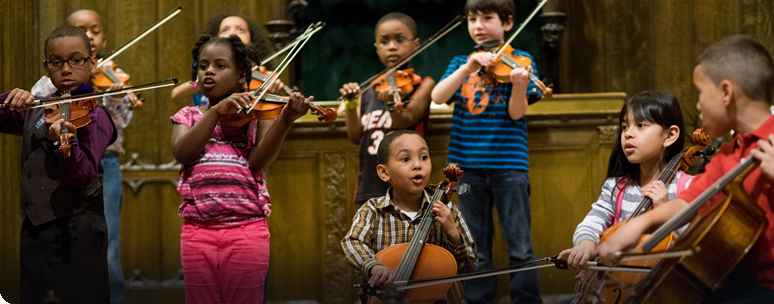A century of American string quartetsAt the height of the Romantic era, composers such as Liszt, Wagner, Mahler, Strauss, and Schoenberg had pushed the harmonic language of classical music to its limit with their emotionally charged chromaticism. In fact, Liszt, Wagner, and Schoenberg even saw possibilities that lay beyond the major/minor tonal system. As early as 1856, the iconic opening bars of Wagner’s Tristan und Isolde envisaged a new harmonic order that was to come 52 years later. Indeed, with Schoenberg’s Drei Stucke, composed in 1908, the fetters of harmony came undone with the first examples of completely atonal music, much to the shock of audiences worldwide. The music world would never be the same, as this bold move opened up many new avenues of compositional thought, and expanded the aesthetic palette of classical music beyond measure. This year, thanks to an American Masterpieces grant from the National Endowment for the Arts, the Providence String Quartet will follow four pathways taken by four different composers during the 20th Century. The earliest piece dates from 1896, and the latest from 1994. Each composer took a road less traveled, and for the genre of the string quartet, that has made all the difference. Charles Ives: String Quartet No. 1 “From the Salvation Army” Written while a student at Yale, Ives’s first string quartet is a compilation of material written for his composition class, and music composed for liturgical use at his college job as organist at a New Haven church. Revival hymns are the main source material in this work that remained unpublished during his lifetime. Samuel Barber: String Quartet, Opus 11 This early work was composed while Barber was studying at the American Academy in Rome. After its premiere in 1936, Barber retracted the final movement and created a new ending, substituting material from the first movement. The PSQ has been given special permission by Barber’s publisher and the Curtis Institute of Music to perform this largely unknown retracted movement. Steve Reich: Different Trains Minimalist composer Reich grew up during World War II traveling by rail between two homes, one in New York and one in Los Angeles. Years later, Reich had the realization that, as a Jew, had he been born in Europe instead of America, he would have been forced to ride on trains to his death. This programmatic work for string quartet and pre-recorded tape is based on interviews with Reich’s governess, a Pullman porter, and Holocaust survivors. Osvaldo Golijov: The Dreams and Prayers of Isaac the Blind Born in Argentina in 1960, Golijov’s composing style is influenced by the convergence of different genres. He grew up immersed in liturgical Jewish and secular klezmer traditions, Western European chamber music, and of course, being an Argentine, the passion of the tango. This work is for string quartet and klezmer clarinet, and it is inspired by the writings of Isaac The Blind, the Kabbalist rabbi of Provence. For performance dates, consult our website calendar. -Jesse Holstein, PSQ |
